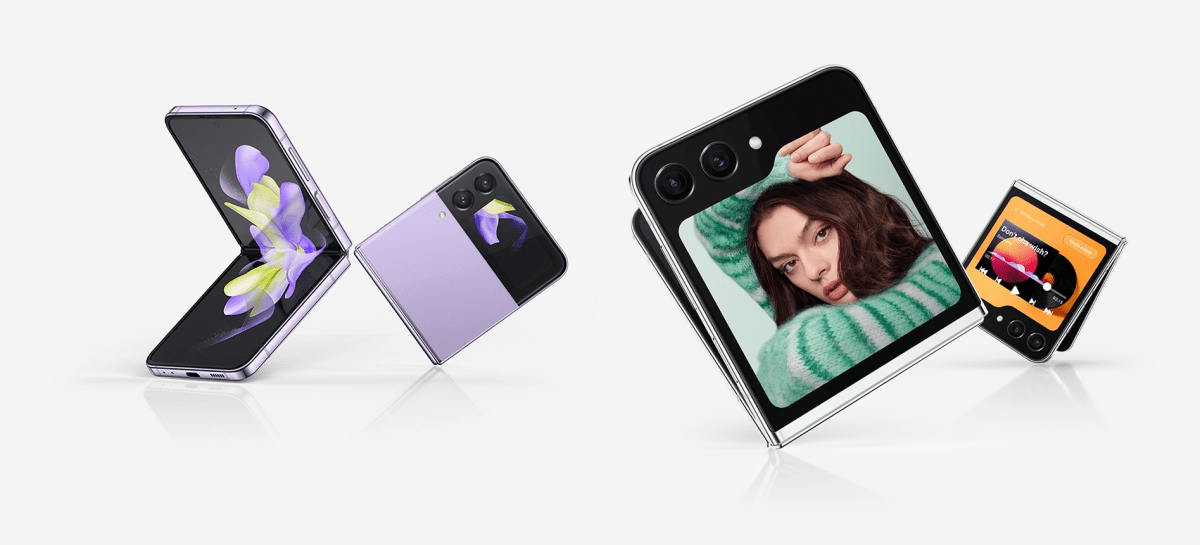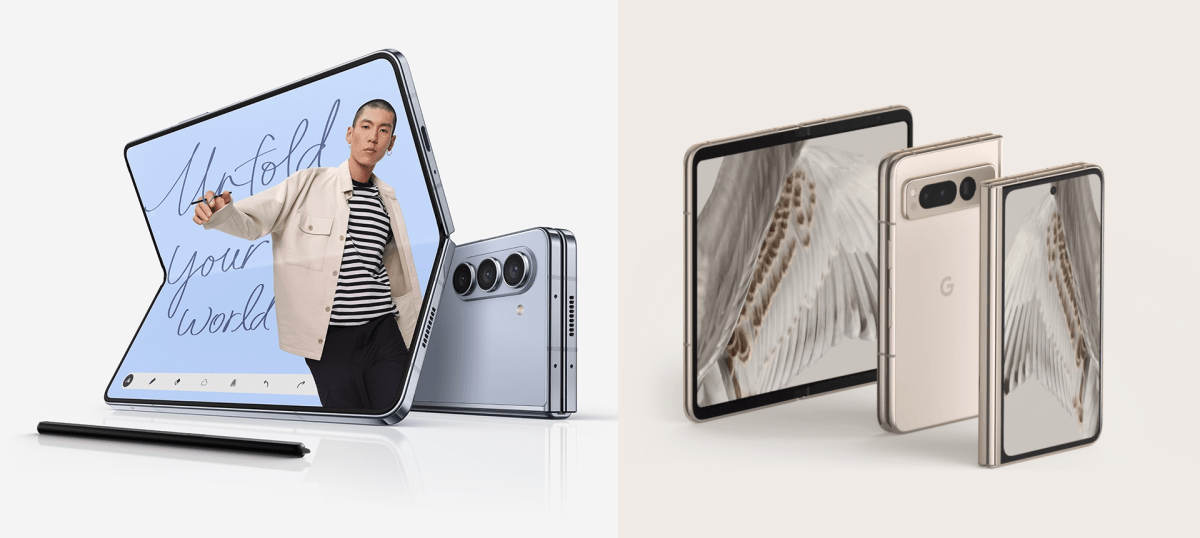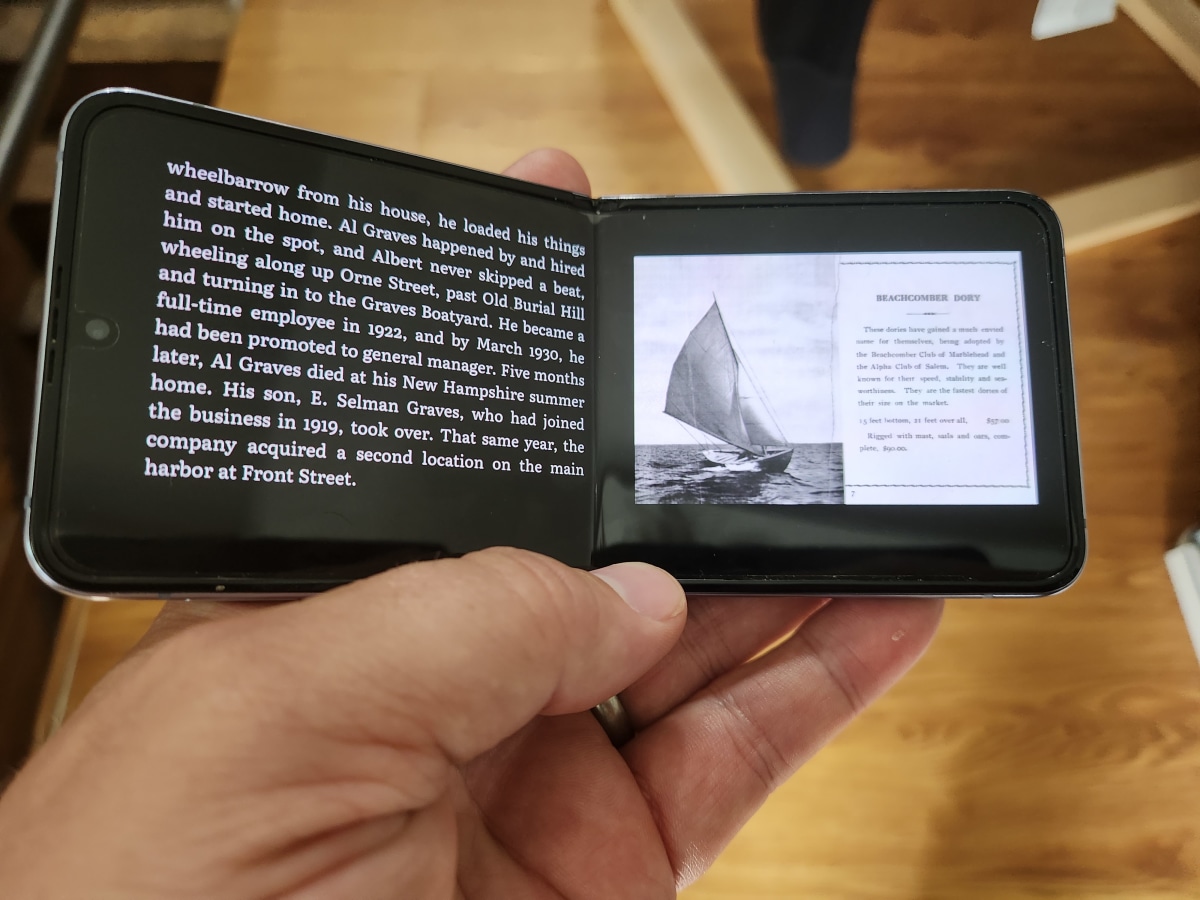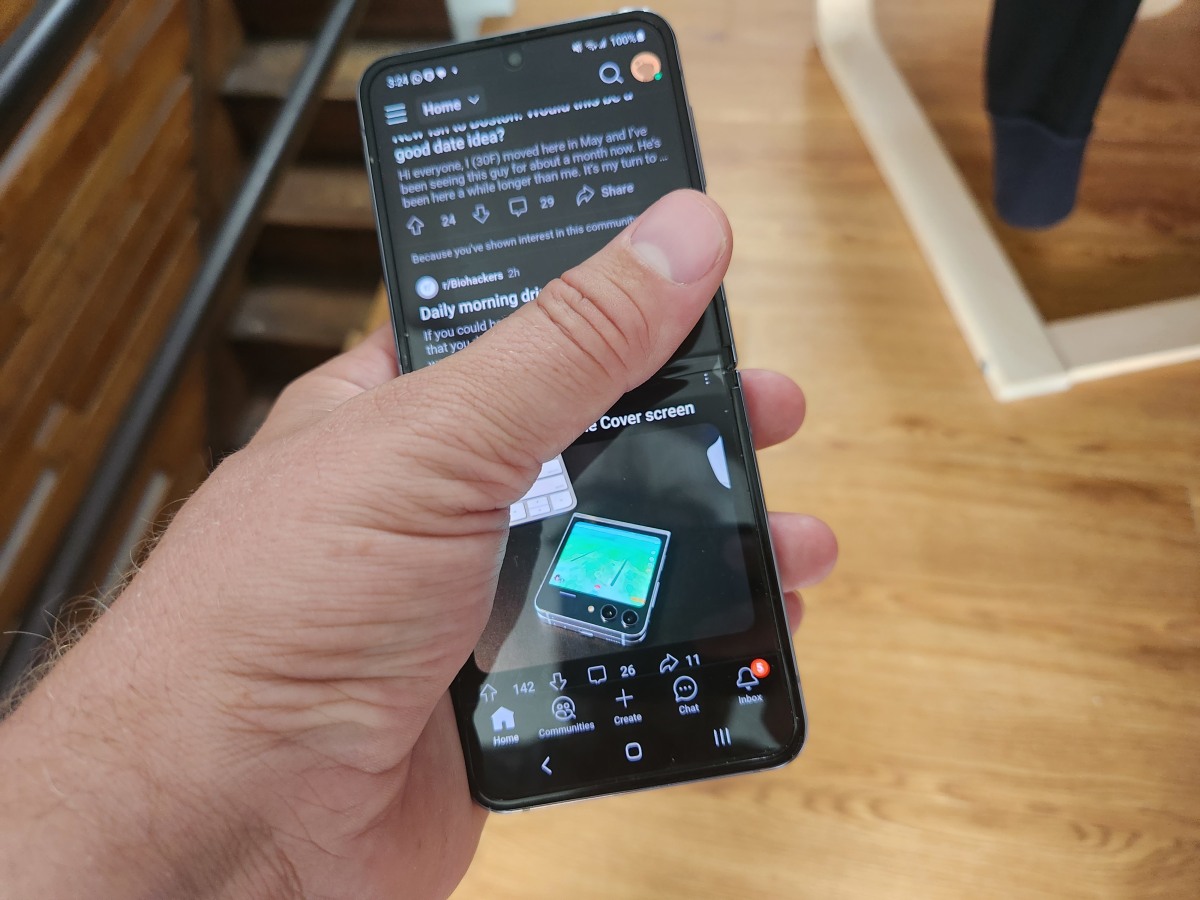One year with a foldable flip phone: the good, the bad, the ugly
A very happy birthday to my Samsung Galaxy Z Flip 4, which just turned one.
I had no intention of buying a foldable phone, but I use Google Fi as my wireless provider and was lured in by what I considered a very reasonable phone payment: $27.50 per month for two years.
It hadn’t even been on the market for a month at the time I bought it, so I took the plunge. I needed a new phone, this one looked interesting, and it wasn’t wildly expensive.
Now, a year later, I have thoughts.
Fold vs. flip: a tale of two phones
Just to level-set, there are two styles of foldable phones available on the market at the moment. Both fold! But it’s the way they fold—or perhaps more importantly, the way they unfold that categorizes them.
My Galaxy Z Flip 4, well, flips. When folded, its length is halved—down to a square, making it easily pocketable. Mine also has a small outer screen that can be used to check the time, messages, navigate music, and other helpful but limited activities. And when I flip it open, it looks more or less like a regular smartphone.
Samsung and others are still refining this idea: Samsung’s latest model, the Galaxy Z Flip 5, has an outer screen that takes up almost all of the outer “square” as it were, versus the outer screen on mine, which takes up only about a third of the square when folded. See below: Flip 4 on the left; Flip 5 on the right. Motorola also has a compelling competing flip phone: the resurrected Razr line.

Compared to flip phones such as the Galaxy Z Flip and Razr, foldable phones look like regular phones when they’re folded. When you unfold them, they resemble small tablets. These are very expensive phones because they employ a heaping helping of screens: one phone-sized one on the outside, and one tablet-sized on on the inside.
The Galaxy Z Fold 5 (pictured left) is Samsung’s newest offering in this category. Google has a competitor called the Pixel Fold (pictured right).

Anyway. For the rest of this article, I’ll be referring to my phone as a flip phone. All these phones I mention run Android: Apple hasn’t come out with a flip or a foldable yet.
The Good
I have loved three phones in my life.
First, the original Danger Hiptop, which eventually became known as the T-Mobile Sidekick. Second, the T-Mobile G1—née the HTC Dream—the first big-time Android phone. And third, the iPhone 4s.

Each were revolutionary in their own way, the iPhone 4s being arguably evolutionary but still quite lovable.

Overall, I like my Flip 4 very much. And there are certain things I love about it:

The Bad
I don’t love everything about this phone, though.
For starters, this is my third Flip 4. The first one kept spontaneously rebooting. It was defective, which could happen with any phone. I don’t know if this was flip-phone related or not, so I suppose I can’t really hold that against it.
The second one fell, with a case on it, from about knee-high right on its hinge. After that, it wouldn’t open flat no matter how hard I tried. Samsung replaced it for free, no questions asked, which was awesome.
This third one has worked as intended. I haven’t dropped it, though I’m terrified of it happening again.
Three big tradeoffs constantly loom for me. This phone isn’t dustproof like most regular phones. That may not seem like a big deal, but a tiny grain of sand from a day at the beach has left an annoying scratch right on the crease, which basically ruined the phone’s trade-in value. That’s a bummer, but it’s my fault for taking a phone to the beach that shouldn’t be at the beach.

My second, arguably dumber problem, is that I like to attach those dopey credit card holders to the back of my phones to carry about my driver’s license, bank card, and credit card. Since the Flip 4 folds in half, my cards jut out. It looks and feels weird, but it hasn’t been an actual problem in my actual life beyond that.
And finally, I’m paying for the two screens and the hinge. This is a midrange phone that was sold at a premium price, albeit one I got a great deal on.

I also have a Samsung Galaxy S22 that outperforms this phone in nearly every way—battery life, performance, cameras, ability to stand up to grains of sand—that I pay $12.50 per month for.
The Ugly
Actually, I’m the ugly one here. I can’t make up my mind. When people see me flip this thing open, they ask about it.
“Do you like it?” My voice gets super high and squeaky as I say, “Yeah? Yeah. I like it.” Do I truly, though?
I do. I do truly like it. But the biggest question for me is whether my next phone will be a flip phone. I can say that I can’t imagine going back to a standard-slab phone.
My heart is wandering, though, and it’s got a crush on some of those foldable phones that splay open into mini tablets. I’ll almost certainly stray to a foldable phone.
Advice from a flip phone owner
If you’re considering a flip phone, don’t be shy about making use of your provider’s return policy if necessary. Most offer 14 days; some offer 30. If you’re not won over within the return period, do yourself a favor: return it, and try something else.
You use your phone for everything. So you might as well like it very much—or, better yet, love it.
(17)


